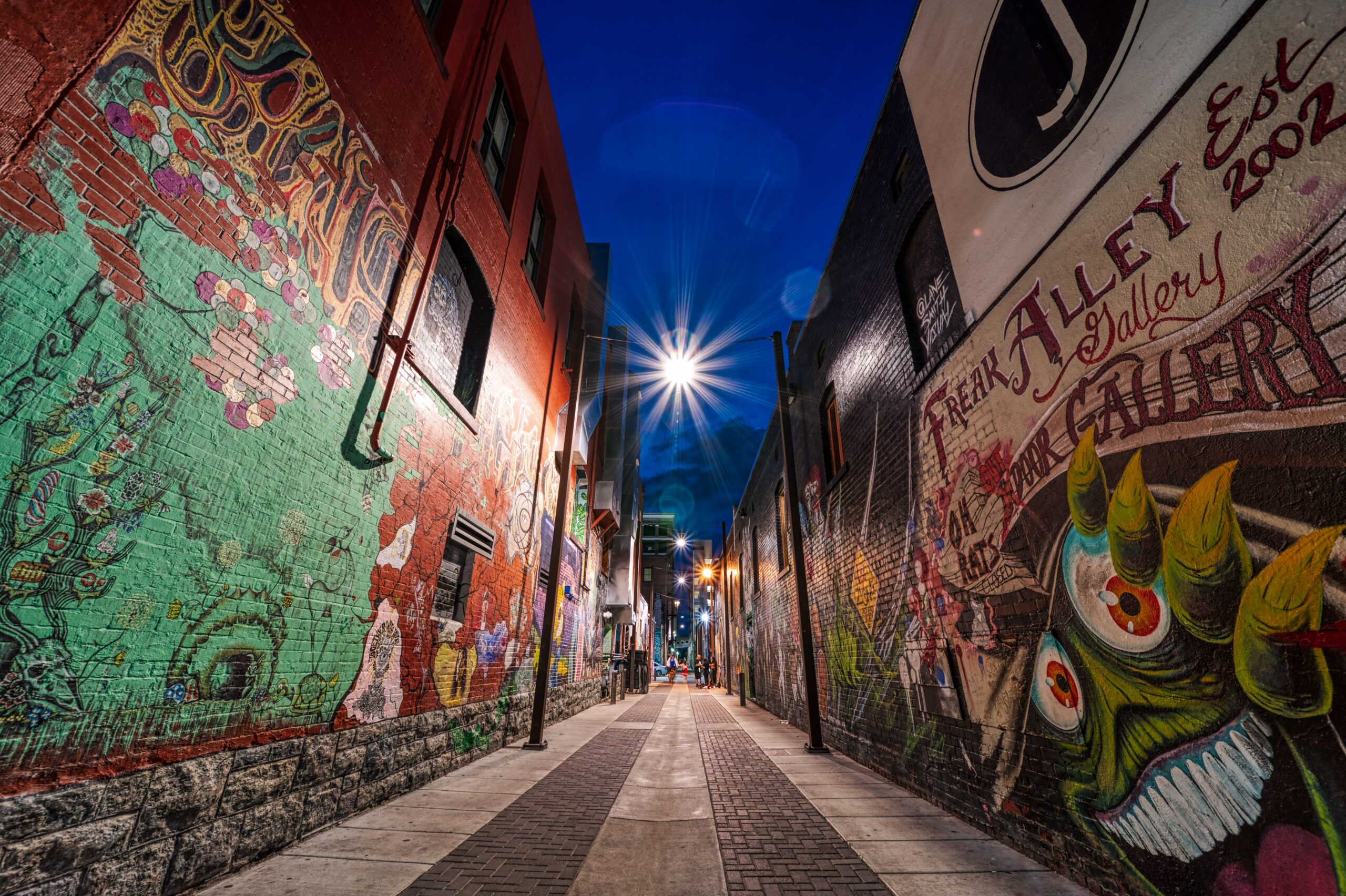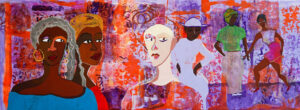Street art, once considered a form of urban rebellion and vandalism, has evolved into a global cultural phenomenon that transcends geographical boundaries and artistic conventions. What began as simple graffiti on the walls of New York City subways in the 1970s has grown into a complex and diverse movement, encompassing everything from muralism and stencil art to installations and performance pieces.
In this article, we will trace the fascinating evolution of street art, exploring its origins, key figures, and its profound impact on contemporary art and culture.
The Roots of Street Art: Graffiti in 1970s New York City
The birthplace of contemporary street art can be traced back to the streets of New York City in the late 1970s. This era saw the emergence of graffiti as a form of expression for marginalized urban youth. Armed with spray cans and pseudonyms, these young artists left their marks on subway cars and city walls, often using vibrant colors and intricate lettering styles.Notable figures from this era include artists like Dondi White, Lady Pink, and Jean-Michel Basquiat, who began as a graffiti artist before transitioning to the gallery scene. The graffiti movement was not only an artistic outlet but also a form of social commentary, addressing issues of race, poverty, and urban decay.
The Transition to Street Art: Beyond Graffiti Tags
As the 1970s gave way to the 1980s, street art began to evolve beyond simple graffiti tags. Artists started experimenting with new techniques and materials, expanding the scope of their work. Stencil art, wheatpasting, and poster art emerged as alternative forms of expression. One of the pioneers of this transition was Keith Haring, whose iconic pop art-inspired figures and symbols became synonymous with New York City’s street art scene.Around the same time, the rise of hip-hop culture and its four elements—rapping, DJing, breakdancing, and graffiti—brought street art further into the mainstream. Hip-hop’s influence on street art can still be seen today in the vibrant and dynamic murals that adorn many urban landscapes.
Banksy: The Enigmatic Street Art Superstar
No discussion of street art’s evolution would be complete without mentioning Banksy, the enigmatic British artist who has achieved global recognition while maintaining his anonymity. Banksy’s stencil artworks often carry powerful political and social messages, addressing issues such as war, inequality, and environmental destruction.Banksy’s meteoric rise to fame brought street art into the international art scene, blurring the lines between public and private art spaces. His pieces have fetched high prices at auctions, further legitimizing street art in the eyes of the art establishment. Banksy’s influence is felt not only in the art world but also in popular culture and social activism.
The Globalization of Street Art
Street art is no longer confined to the streets of New York or London. It has become a global phenomenon, with artists from diverse backgrounds and cultures contributing to its rich tapestry. Cities around the world have embraced street art as a means of revitalizing neighborhoods, fostering creativity, and promoting tourism.The Wynwood Walls in Miami, the East Side Gallery in Berlin, and the Mural Festival in Montreal are just a few examples of curated street art spaces that showcase the work of local and international artists. These spaces have transformed urban environments into open-air galleries, attracting art enthusiasts and tourists alike.
Street Art as Social Commentary
One of the enduring characteristics of street art is its ability to address pressing social and political issues. Street artists often use their work to challenge the status quo, raise awareness about injustices, and provoke critical thinking. Murals and installations have become powerful tools for activism and social commentary.For example, the artist JR has created large-scale photographic installations that highlight the stories of marginalized communities around the world. His “Inside Out” project has featured portraits of refugees, prisoners, and victims of violence, amplifying their voices and experiences.
Technology and Street Art
The digital age has had a profound impact on the evolution of street art. Artists now use social media platforms to share their work with a global audience, making it more accessible than ever before. Platforms like Instagram and Twitter have become virtual galleries, allowing artists to connect with fans, collaborate with peers, and gain recognition.Additionally, augmented reality (AR) and virtual reality (VR) technologies have opened up new possibilities for interactive street art experiences. Artists can create digital overlays on physical murals, providing viewers with immersive and interactive encounters.
Challenges and Controversies
Despite its growing popularity and acceptance, street art still faces challenges and controversies. Many street artists operate in a legal gray area, as their work often involves trespassing on private property. While some cities have embraced street art as a form of cultural expression, others continue to view it as vandalism.The commercialization of street art has also raised ethical questions. When street art is bought, sold, and displayed in galleries, it can lose its authenticity and subversive edge. Artists must navigate the fine line between commercial success and maintaining their street credibility.
Conclusion
Street art has come a long way from its humble beginnings as graffiti on subway cars. It has evolved into a global phenomenon that transcends cultural boundaries and challenges traditional notions of art. Street artists continue to push the boundaries of creativity, using their work to engage with social and political issues and to provoke thought and dialogue.The evolution of street art reminds us that art is not confined to the walls of museums and galleries; it can be found on the streets where people live, work, and play. It is a testament to the power of art to inspire, provoke, and connect people across the world. As street art continues to evolve and adapt to new technologies and cultural shifts, its impact on contemporary art and culture remains profound and enduring.



